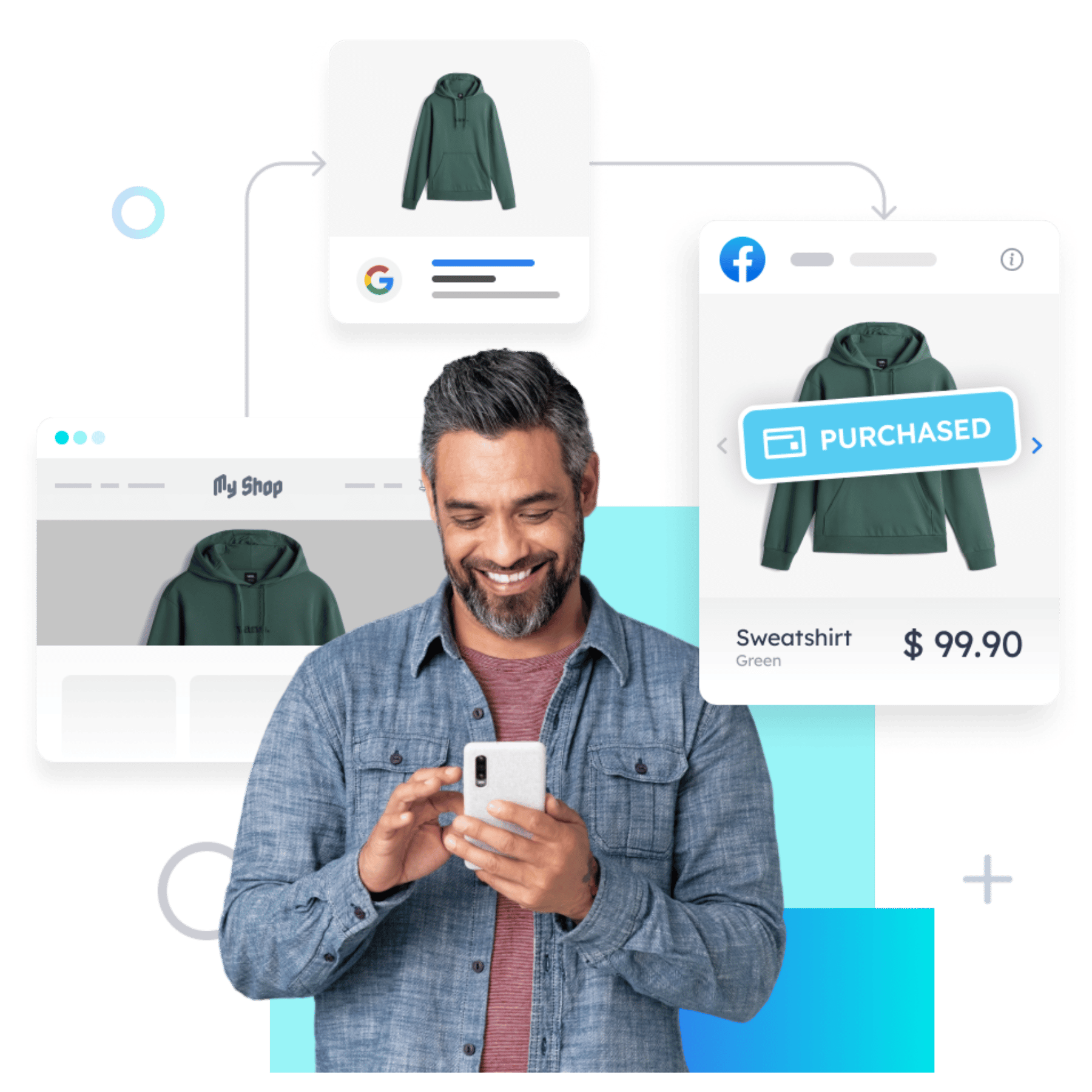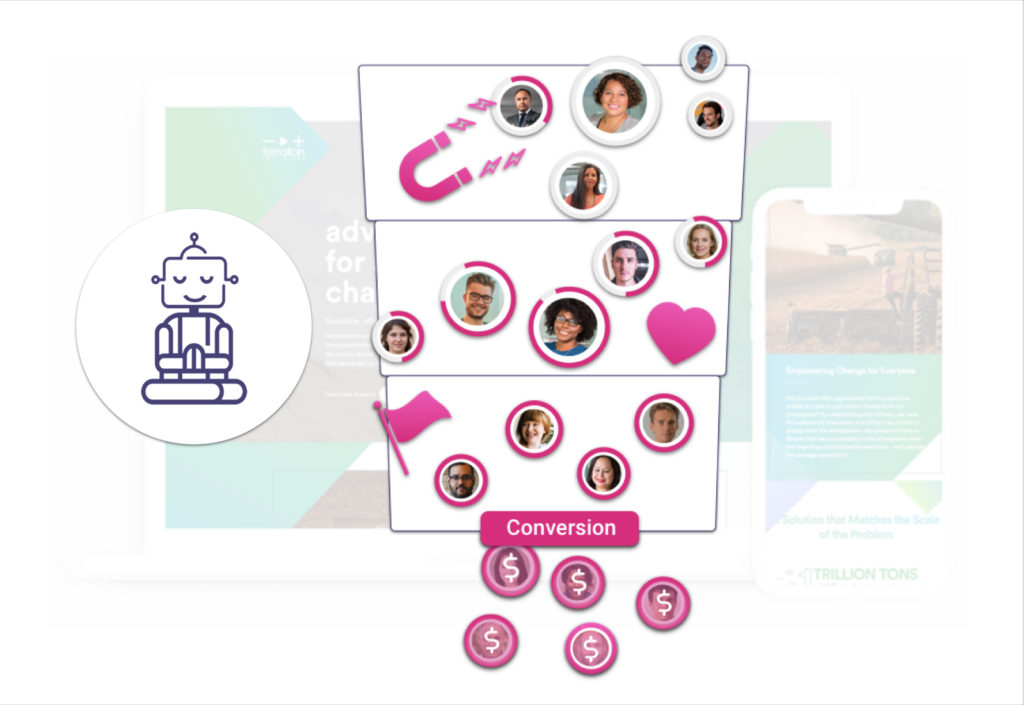
98% of visitors leave your website without converting. It’s no wonder that retargeting ads are a key player in any marketing strategy with 71% of marketers spending 10–50% of their entire online ad budget on retargeting and 70% of marketers using retargeting for brand awareness.
With the digital world opening up opportunities to research and engage with different brands there can be many touch-points involved before a consumer is ready to buy. With the combined issues of multiple decision-makers and the need to better influence and personalize buying journeys; increasing conversions can be no easy feat in our complex buying world.
So What Are Retargeting Ads?
For those prospects who visited your website and interacted with your solutions and products, for those who had high hopes of converting but just didn’t, the timing of Google Ads’ first launch of retargeting in 2010 was a revolutionary introduction. This breakout tactic was exactly what analytical and technology-driven marketers demanded in an online-first, multi-platform, data-driven marketing world.
With retargeting ads, marketers could directly target the most promising individual. Businesses could show targeted ads to the users who visited a website but didn’t complete a conversion. As those prospects navigate the internet; moving from websites to social platforms to apps, partner sites will host ads on the pages they visit; ensuring your brand is always top-of-mind.
2.5x better ad results with cookieless retargeting
Create high-converting retargeting ads based on your users' real-time intent.

What Do Third-Party Cookies Have to Do With It?
Advertisers have used third-party cookies as a way to track users across the internet more precisely. These cookies are stored on a consumer’s browser to access details of their internet activity and specific interests. These third-party cookies, suitably named, come from a website other than the one a user is currently on. This data is then used by third-party websites, such as Facebook, Amazon, and other Ad platforms to present targeted, relevant, and focused advertising.
This type of data collection and the need for these cookies is critical to advertisers in order to inform the content they curate; enhancing the success of showing the correct product or solution to that user. First-party cookies only collect user data when interacting directly with your website, whereas third-party cookies allow users to be tracked across sites. By providing a more in-depth overview of a user’s online behavior these third parties can inform how the information will be presented to the consumer.
How Does Third-Party Cookie Deprecation Impact Retargeting Ads?
More than half of marketers say cookies are critical to their marketing approach with 80% of marketers being very or moderately reliant on third-party cookies for their digital advertising efforts. As we mentioned before almost all of our website visitors are leaving without converting, meaning that marketers are desperate to re-engage those prospective customers. As attention spans shorten we’re eager to remind those consumers of our brand with the hope that the more they see something the more they’ll be inclined to like it.
So as Google announced the phase-out of third-party cookies marketers became concerned. With 67% of marketers feeling disappointed, frustrated, overwhelmed, helpless, and even confused. With the removal of third-party cookies, marketers fear the success of retargeting ads; making them less effective and personalized. With ongoing privacy changes the data collection laws the ability to programmatically retarget users will be affected. However, the public demand for privacy and data control can no longer be ignored and we must work to improve our user experience without reliance on third-party cookies. As retargeting ads have become an integral part of our prospects’ buying journeys and a key contributor to increasing conversions, how can we continue to re-engage, track, and personalize without these cookies?
Retargeting Ads Alternatives
The promising news is that third-party cookies are not the only way to serve ads and perhaps this is good news. In our multi-platform world, third-party cookies are unable to bridge the gap between devices and apps, making it hard to track the full customer journey; giving third-party cookies less power than we think.
As users start to manage and clear their cookies while hopping from one device to another; advertisers are relying on out-of-date and incorrect cookie data. Not to mention the budget wasted by marketers as they try to correctly target the right channels and users.

1. Universal IDs
The Universal ID is a single user identifier created by an ad-tech company that recognizes a user within the digital ecosystem and allows that user information to be passed onto the approved partners. It isn’t restricted to third-party cookies, so first-party data and offline data can be used to create universal IDs. However, “Advertisers keen to establish the future scope for one-to-one targeting haven’t had an easy time figuring out Google’s position on Universal IDs” As the digital world is ever-changing and with growing privacy concerns one has to ask how long will the viability of Universal IDs last.
2. Contextual Targeting
Digital advertising is all about delivering the most relevant message and content to a targeted audience. As stated by Google, contextual targeting is the process that ‘matches ads to relevant sites in the Display Network using keywords or topics, among other factors.’ Therefore it uses the context of your web browser to determine what ads you will see. A user may not see the exact product they had previously engaged with but they will continue to see ads that are related to those products. Allowing you to reach people with the intent to purchase. Google’s algorithms determine which ads should appear on a website based on a user’s search history.
3. First-Party and Zero-Party Data Strategies
We have the opportunity to leverage the data that users are willingly and conscientiously sharing with us to create more personalized advertising strategies. For this data collection to be used effectively businesses will require expertise, extraction capabilities, and effective strategic planning to ensure its success; something not all organizations have access to. Lacking both scalability and reach means that these strategies may be less effective for retargeting ads purposes than we’d hope.

4. Artificial Intelligence
Artificial intelligence (AI) is becoming essential to the future and survival of the advertising industry. Solutions powered by AI can gather information, identify trends, and predict online behavior; providing effective ads without collecting identifiable information and avoiding privacy issues. Instead of tracking individual users and their private data, AI advertising analyzes user behavior on a larger scale, providing more insightful information.
5. Pathmonk Retargeting
Using the power of AI, Pathmonk Retargeting is an entirely cookieless solution. Pathmonk’s technology is a future-proof opportunity for your marketing team. Boost your ROI with a retargeting strategy based on buying journey stages and user personas. Processing different kinds of data, and collecting real-time user data such as search history, custom preferences, etc. allows our technology to analyze users’ behavior, find patterns, and personalize ad recommendations to target users with real buying intent.
With a one-click installation, you have the power of buying-journey-stage retargeting that is entirely cookieless and based on intent-data profiles; meaning less ad spend for you and more conversions.
Don’t Forget Personalized Buying Journeys
The loss of third-party cookies and the overall concerns about data privacy have left us to review and reanalyze some of our key marketing strategies. Perhaps it has given us the opportunity to truly reconsider how we’re personalizing and understanding our prospects’ buying journeys. Brands must consider how the experience of their websites, from navigation to purchase, supports engagement. To create personalized buying journeys we must acknowledge the buying journey stages our user finds themselves in.
We must provide our prospects with CTAs and content that match their intent and buying journey stage. Content that supports the prospect, provides value, and guides them to the natural next step in their buying journey.

But how do we know what stage they are in? Pathmonk Results analyses the website buying journey and influences visitors in real-time to instantly qualify and convert. With the power of artificial intelligence Pathmonk Results predicts intent and ultimately the most likely next step of your prospect. Will they leave, do more research, or sign up? Through interactive micro-experiences you can serve content that matches your prospects’ needs; always adding personalization and value to the overall buying experience without relying on cookies.
Consumers demand personalized experiences in a way that does not invade privacy or bombard them with adverts and irrelevant content. With the phasing out of third-party cookies, marketers and advertisers have the opportunity to change the narrative around advertising and personalization.
2.5x better ad results with cookieless retargeting
Create high-converting retargeting ads based on your users' real-time intent.









